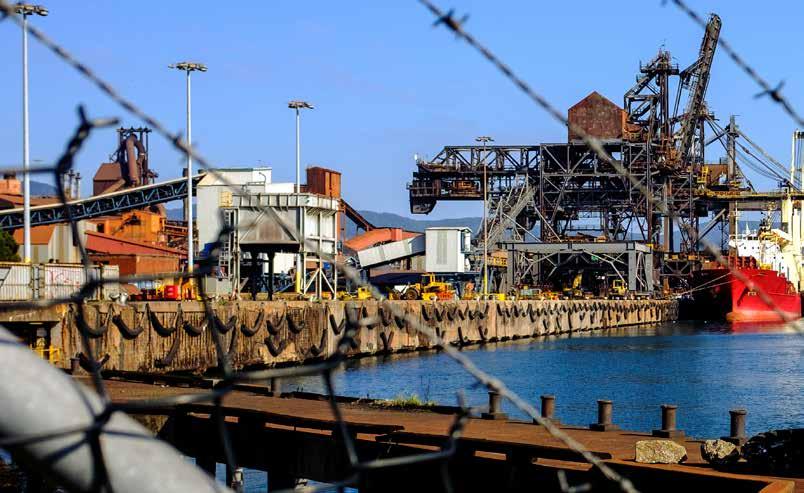14
MARINE | Sulphur rules In association with North P&I Club
Sulphur cap needs clarity and consistency Alvin Forster, Loss Prevention Executive at North P&I Club, calls for clarity and consistency in the enforcement of the fuel sulphur cap In terms of safety, the introduction of the International Maritime Organisation’s (IMO) 0.50% sulphur cap on marine fuels has largely been a success. Predictions of vessels losing propulsion in busy shipping lanes or suffering loss of electrical power were, thankfully, proved incorrect. By and large, the industry – in particular ships’ crews – have managed the transition very well. It has not, however, all been plain sailing. The backend of 2019 saw concerns being raised on the poor stability characteristics of some of the new very-low-sulphur fuel oil (VLSFO) products and the risk of incompatibility between stems, which did indeed become realised to a certain extent throughout 2020. There were some operational issues that were perhaps not as well foreseen, such as increased liner wear of engines attributed to the poor matching of cylinder lubricating oil with the fuel in use combined with too infrequent scavenge inspections. These have all had some sort of impact on us at North, resulting in claims and, more prominently, disputes amongst shipowners, charterers and fuel suppliers. However, what has kept us busiest are the reports of potential marginal non-compliance, which sounds innocuous to say the least.
THE PROBLEM SCENARIO The vessel requests compliant bunkers to be delivered. The party ordering the bunkers (either the owner or time charterer) specifies compliant fuel to be supplied to the vessel. Upon completion of bunkering, the supplier issues a bunker delivery note (BDN) which declares the fuel to be compliant (0.50% S or less). The receiving vessel then sends a representative sample drawn during bunkering to an independent laboratory where it is tested against ISO 8217 listed parameters for commercial purposes. Several days later, the test result returns a sulphur content that is between 0.51% and 0.53%, therefore indicating non-compliance The Marine Insurer Nordic & Asia Special Edition | April 2021
with the limit specified in MARPOL Annex VI. What happens next? Are the bunkers off-spec, non-compliant or both? Can the fuel be used? Who should be notified? Will the vessel be targeted by the authorities and what action will they take? Should it be de-bunkered? This is where confusion reigns and this is leading to commercial disputes and, in some cases, de-bunkering.
ARE THE BUNKERS OFF-SPECIFICATION? According to existing industry guidance issued by organisations such as the International Bunker Industry Association (IBIA) and the International Council on Combustion Engines (CIMAC), if the receiving vessel’s own sample returns a result of 0.53% or less, they cannot bring a claim against the supplier. The rationale behind this 0.53% cut-off mark is ‘single-test reproducibility’, which raises its head frequently in this matter. In very simple terms, it is an allowance that is applied to a lab test result that recognises the limitations on the accuracy of a single test. If the vessel’s sample test result is over 0.53%, then a claim against the supplier may be initiated. The supplier’s retained sample is usually contractually binding and therefore tested. If that test returns a result of 0.51% or more (single-test reproducibility is not applied in this stage – just to confuse matters!), then it is deemed off-spec for commercial purposes. However, these are only guidelines and a supplier may have different terms in their bunker contract. The situation becomes more complex in situations where the time charterer provides the bunkers under the terms of the charterparty. While the supplier will consider their sample to be the binding commercial sample between them and the fuel purchaser, this is unlikely to be the binding sample under the charterparty, which is usually that drawn by the vessel. This could lead to situations where the time charterer is liable to the shipowner but is unlikely to be able to recover losses from the supplier.
NON-COMPLIANT BUNKERS? If the receiving vessel’s own sample returns a result greater than 0.50%, then it does not automatically mean that the bunkers are non-compliant with MARPOL. Non-compliance can only be confirmed by testing any of the MARPOL (International Convention for the Prevention of





















